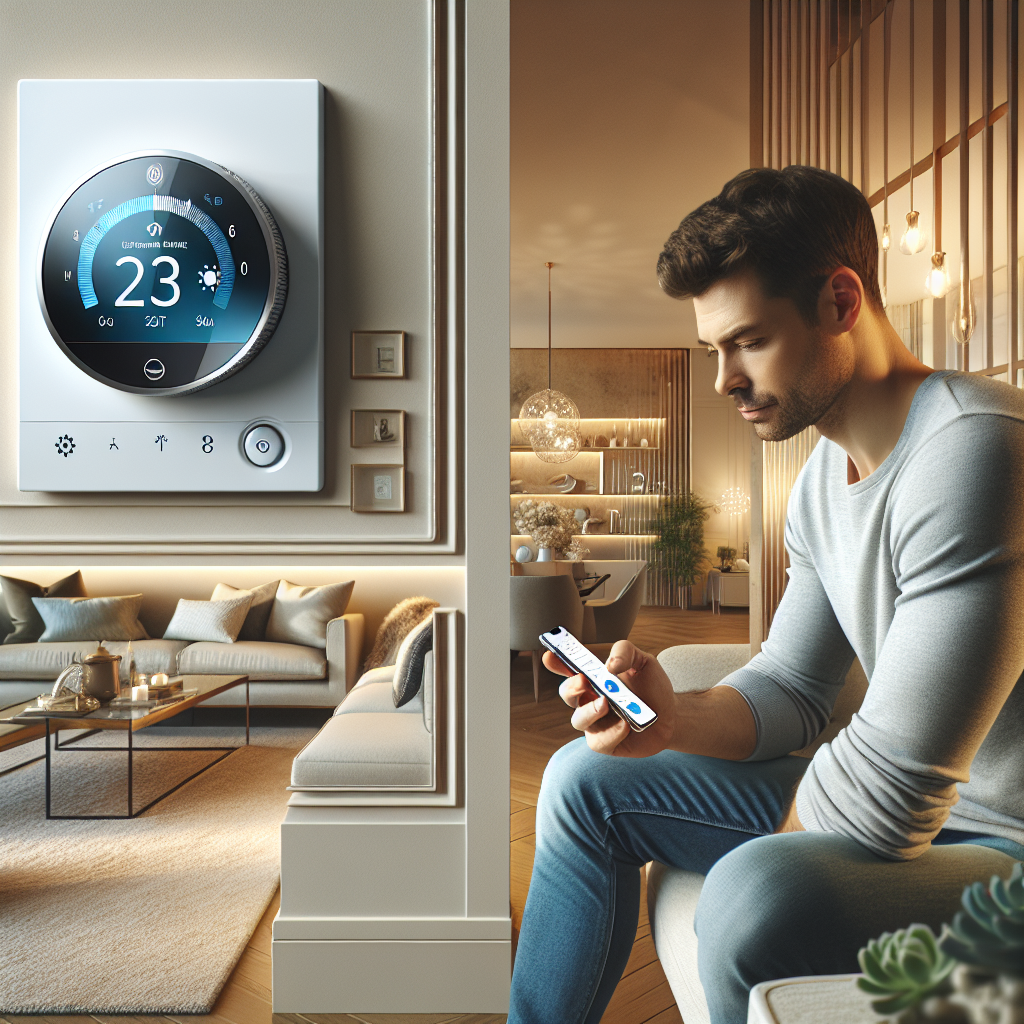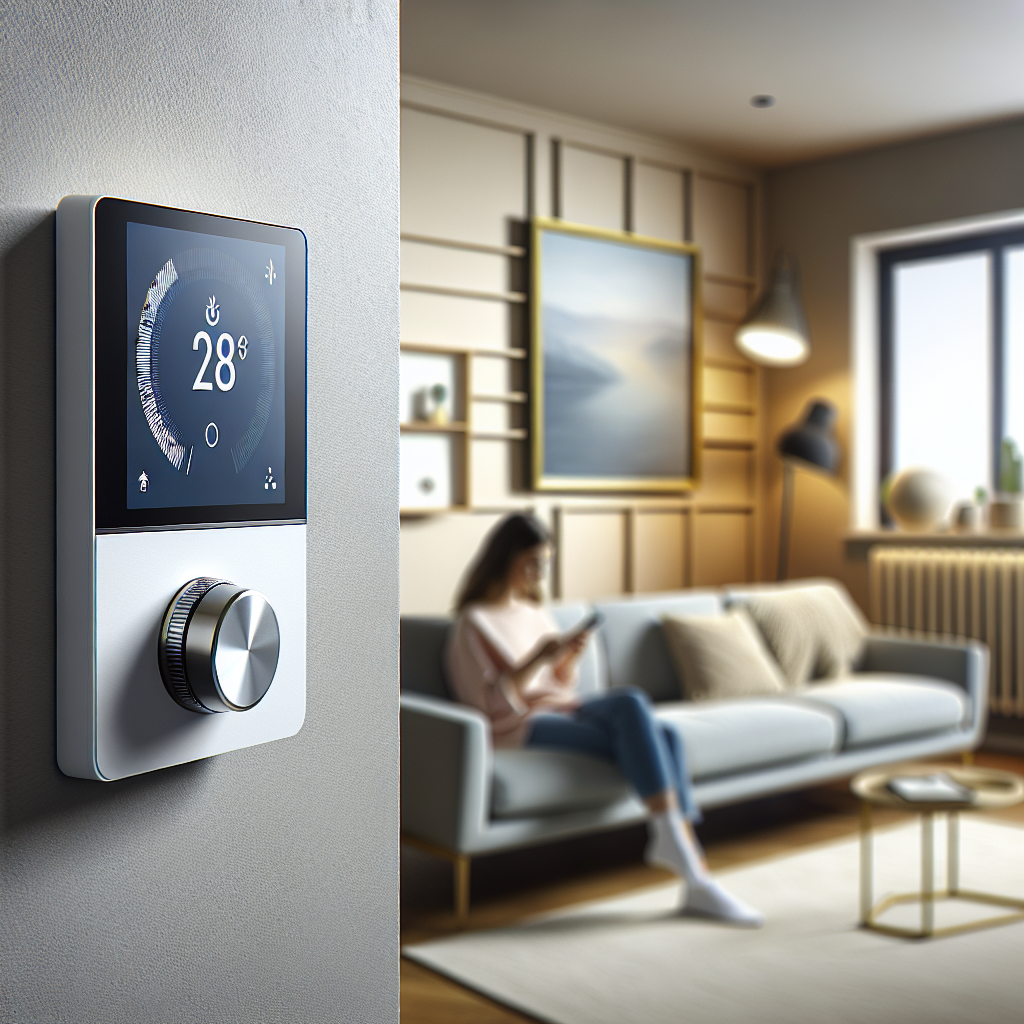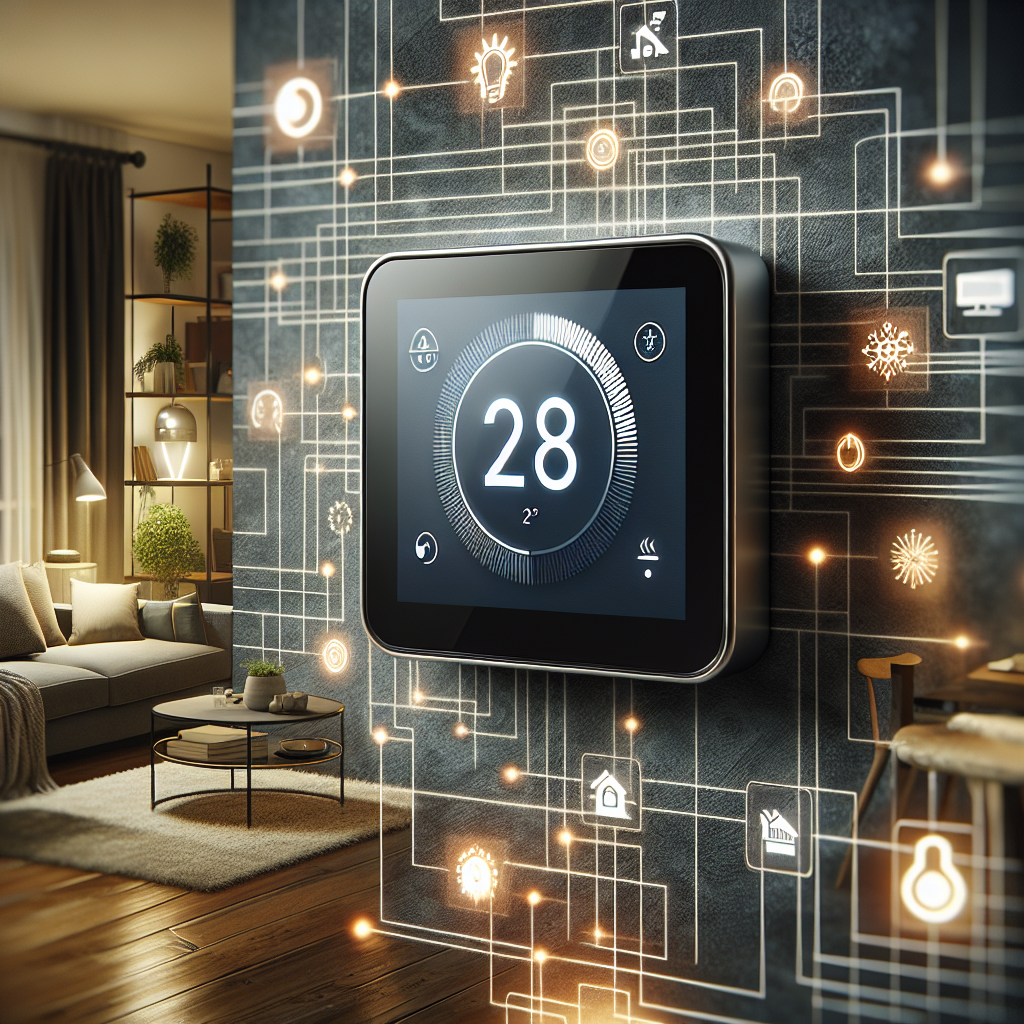Smart thermostats have revolutionized the way we control the temperature in our homes, bringing a new level of convenience and energy efficiency to our daily lives. These advanced devices utilize cutting-edge technology to learn our heating and cooling preferences, adjust settings automatically, and even detect when we are away to save on energy costs. With the ability to be controlled remotely via smartphones and voice assistants, smart thermostats offer unparalleled convenience and comfort. By seamlessly integrating into your home automation system, these devices not only enhance your living space but also help you reduce your environmental footprint.
Understanding Smart Thermostats
- Definition and Functionality
Smart thermostats are advanced devices that enable homeowners to remotely control and automate their home’s temperature settings through a smartphone, tablet, or computer. These devices use sensors to monitor the temperature in different rooms and adjust heating or cooling systems accordingly. They can also learn the household’s schedule and preferences to optimize energy usage and comfort levels.
- Benefits of Smart Thermostats
- Energy Efficiency: Smart thermostats help reduce energy consumption by adjusting temperature settings based on occupancy and user preferences. This leads to lower utility bills and a reduced carbon footprint.
- Remote Accessibility: Users can control the thermostat from anywhere with an internet connection, providing convenience and flexibility. This feature is particularly useful for adjusting settings while away from home or during unpredictable weather changes.
- Learning Capabilities: Some smart thermostats can analyze usage patterns and make automatic adjustments to optimize comfort and efficiency. Over time, these devices can adapt to the household’s routine and preferences without manual input.
- Integration with Smart Home Systems: Smart thermostats can be integrated with other smart home devices, such as lighting systems and security cameras, to create a comprehensive home automation ecosystem. This allows for centralized control and coordination of various functions for improved convenience and energy savings.
Installation and Compatibility

– ### Installing a Smart Thermostat
Installing a smart thermostat typically involves a few key steps to ensure proper functionality and integration with your home’s heating and cooling system. Firstly, it is crucial to turn off the power to your HVAC system before beginning the installation process to prevent any electrical mishaps. Next, carefully remove your existing thermostat and take note of the wiring configuration to assist in connecting the new smart thermostat. Following the manufacturer’s instructions, connect the wires to the corresponding terminals on the smart thermostat base. Once the wiring is complete, attach the thermostat to the base and restore power to the HVAC system. Finally, follow the setup instructions provided by the manufacturer to connect the smart thermostat to your home’s Wi-Fi network and configure the desired temperature settings.
-
Compatibility with HVAC Systems
Before purchasing a smart thermostat, it is essential to verify its compatibility with your home’s HVAC system to ensure seamless integration and optimal performance. Smart thermostats are designed to work with a wide range of heating and cooling systems, including central heating, air conditioning, heat pumps, and more. However, certain HVAC systems may require specific wiring configurations or voltage requirements that not all smart thermostats support. To determine compatibility, check the smart thermostat manufacturer’s website or consult with a professional installer to assess whether the device is suitable for your HVAC setup. Additionally, some smart thermostats offer compatibility check tools that analyze your system’s wiring and provide recommendations for compatible models, simplifying the selection process and ensuring a successful installation.

Features and Technology
- Remote Access and Control
Smart thermostats offer the convenient feature of remote access and control, allowing homeowners to adjust the temperature of their homes from anywhere using a smartphone or other connected devices. This functionality enables users to ensure their homes are comfortable upon arrival or to make energy-saving adjustments while away. By connecting to the internet, smart thermostats provide real-time updates and notifications, giving users greater control over their indoor climate. - Learning Capabilities of Smart Thermostats
One of the key features of smart thermostats is their learning capabilities, which enable them to adapt to the household’s schedule and preferences over time. By analyzing user behavior and temperature settings, these devices can automatically adjust the heating or cooling patterns to optimize comfort and energy efficiency. This personalized approach not only enhances user comfort but also contributes to significant energy savings by reducing unnecessary heating or cooling when no one is home. - Integration with Smart Home Systems
Smart thermostats are designed to seamlessly integrate with other smart home devices and systems, allowing for a more comprehensive home automation experience. Through compatibility with popular smart home platforms like Amazon Alexa, Google Assistant, or Apple HomeKit, users can create customized routines and automate temperature adjustments based on various triggers or conditions. This integration not only enhances convenience but also enables a more interconnected and efficient home environment.
Energy Efficiency and Cost Savings
Smart thermostats play a crucial role in enhancing energy efficiency and cost savings within residential settings. By offering advanced features and capabilities, these devices enable homeowners to optimize their heating and cooling systems for maximum efficiency.
- Programmable Schedules
One key feature that contributes to energy efficiency is the ability to create programmable schedules. This allows users to set specific temperature preferences for different times of the day, ensuring that heating or cooling is only used when needed. By adjusting the temperature based on occupancy patterns, smart thermostats help reduce energy waste and lower utility bills.
- Energy Usage Monitoring
Another way smart thermostats enhance energy efficiency is through energy usage monitoring. These devices provide real-time data on heating and cooling consumption, allowing homeowners to track their energy usage and identify opportunities for improvement. By gaining insights into their energy consumption patterns, users can make informed decisions to optimize their HVAC systems and reduce energy waste.
- Potential Cost Savings with Smart Thermostats

The combination of programmable schedules and energy monitoring capabilities offered by smart thermostats can lead to significant cost savings over time. By efficiently managing heating and cooling operations, homeowners can reduce their energy bills and lower overall household expenses. Additionally, the ability to remotely control the thermostat and make adjustments from anywhere using a smartphone or tablet adds convenience and flexibility while further enhancing cost-saving opportunities.
Common Misconceptions About Smart Thermostats
-
Myth: Smart Thermostats Are Complicated to Use
- Contrary to popular belief, smart thermostats are designed to be user-friendly and intuitive, even for those who are not tech-savvy. Most models come with easy-to-follow installation instructions and user manuals that simplify the setup process. Additionally, many smart thermostats can be controlled remotely via smartphone apps, making it convenient for users to adjust the temperature settings from anywhere.
-
Myth: Smart Thermostats Do Not Save Energy
- One of the key features of smart thermostats is their ability to optimize energy usage by learning the household’s heating and cooling patterns. By using sensors and algorithms, smart thermostats can adjust the temperature based on occupancy and preferences, leading to significant energy savings over time. Studies have shown that households using smart thermostats can reduce their energy consumption and utility bills by up to 20%.
-
Myth: Smart Thermostats Are Expensive
- While the initial cost of purchasing a smart thermostat may seem higher compared to traditional thermostats, the long-term savings outweigh the upfront investment. With energy-saving features and programmable settings, smart thermostats can help homeowners reduce their heating and cooling costs significantly. Additionally, many utility companies offer rebates and incentives for installing energy-efficient devices like smart thermostats, making them more affordable for consumers.
Future Trends in Smart Thermostats
The future of smart thermostats is poised for significant advancements, driven by technological innovations and consumer demand for more efficient and sustainable home automation solutions. Below are some key trends shaping the future of smart thermostats:
- Advancements in AI Technology
Smart thermostats are expected to leverage increasingly sophisticated artificial intelligence (AI) algorithms to learn user preferences, optimize energy usage, and enhance overall comfort levels in homes. By analyzing data such as occupancy patterns, weather forecasts, and user behavior, AI-powered smart thermostats can continuously adapt and adjust temperature settings to meet the specific needs of occupants while maximizing energy efficiency.
- Increased Focus on Sustainability and Energy Efficiency
With growing concerns about climate change and rising energy costs, future smart thermostats will place a greater emphasis on sustainability and energy efficiency. These devices will not only enable homeowners to monitor and control their heating and cooling systems remotely but also provide insights into energy consumption patterns and opportunities for optimization. By promoting more sustainable practices, smart thermostats can help reduce carbon footprints and lower utility bills.
- Potential Integration with Renewable Energy Sources
As renewable energy sources such as solar panels become more prevalent in residential settings, smart thermostats are expected to integrate with these systems to further enhance energy efficiency. By coordinating with solar power generation and storage solutions, smart thermostats can intelligently adjust temperature settings based on available renewable energy supply, helping homeowners maximize their use of clean energy and reduce reliance on traditional grid electricity. This integration holds the promise of creating more environmentally friendly and cost-effective home heating and cooling solutions.
FAQs: Smart Thermostats for Temperature Control: Enhancing Home Automation
What is a smart thermostat?
A smart thermostat is a device that can be controlled remotely through a smartphone or other internet-connected device. It allows users to adjust the temperature of their home from anywhere, as well as set schedules and receive alerts about energy usage. Smart thermostats are designed to make it easier to manage heating and cooling in your home efficiently.
How do smart thermostats save energy?
Smart thermostats can save energy in a few different ways. They can learn your habits and preferences over time, adjusting the temperature automatically to minimize energy waste. They also allow you to set schedules based on when you’re home or away, ensuring that energy is not being wasted when no one is there. Additionally, many smart thermostats provide energy usage reports and tips for optimizing your heating and cooling habits.
Can I control multiple smart thermostats in different rooms?
Yes, many smart thermostat systems can control multiple thermostats in different zones of your home. This allows you to customize the temperature settings for each room or area, ensuring that everyone is comfortable and energy is not wasted in unused spaces. Some smart thermostat systems even allow for integration with other smart home devices, such as sensors and smart locks, for a fully automated home experience.
Are smart thermostats compatible with all HVAC systems?
Most smart thermostats are compatible with the majority of HVAC systems, including central heating and cooling systems, heat pumps, and even some older systems. However, it’s important to check the compatibility of a smart thermostat with your specific HVAC system before purchasing. Many smart thermostat manufacturers provide online tools to help you determine if their device will work with your setup.